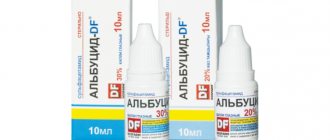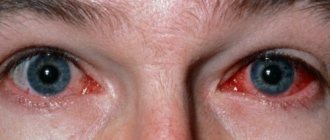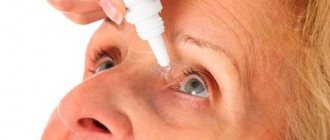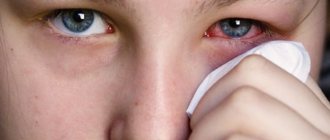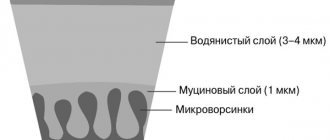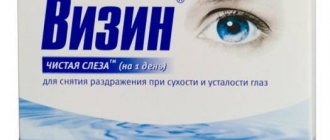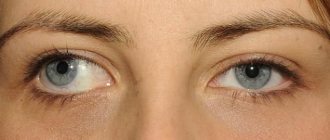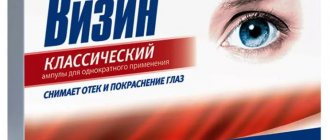Indications for use
Eye drops are used in the treatment of the following eye diseases:
- gonorrheal;
- blepharitis;
- corneal ulcers;
- blenorrhea;
- keratitis;
- conjunctivitis, etc.
The drug is used for infants to prevent blenorrhea. Sodium sulfacyl prevents purulent processes and shortens the healing time of the cornea.
It is prescribed in the treatment of staphyloderma, infections caused by E. coli and streptoderma. Also, for puerperal sepsis, colibacillary infections of the genitourinary system and mastoiditis, an ophthalmic drug is used. The medicine is used in the treatment of bacterial infectious diseases.
After removing foreign bodies from the eye, the drug is instilled into it.
Sulfacyl sodium is used in the treatment of corneal burns.
The drug copes well in the fight against the following microorganisms:
- streptococcus;
- chlamydia;
- actinomycete and others.
Difference in drugs
Pharmacy chains may sell this drug under different names. In this regard, many consumers have a logical question about what is the difference between Sulfacyl Sodium medications and Sulfacyl Sodium-DIA. Experts answer it unequivocally. These drugs are no different from each other (neither in principle of action nor in composition). Both medications can be used for conjunctivitis, eye trauma, blenorrhea and other abnormalities. The only difference between them is that they have different manufacturers. In particular, the drug “Sodium Sulfacyl-DIA” is manufactured, which explains its name.
Compound
The ophthalmic medicine is sold in bottles of 5 and 10 ml, as well as in disposable dropper bottles of 0.5 and 1.5 ml. They are placed in cardboard packages. Dosage of drops – 20% and 30%.
The medicine tubes are supplied with a dropper. This contributes to a convenient dosage of the drug. When treating pediatric patients, the same vials are used as for treating adults.
For 1 ml of sodium sulfacyl there are: 200 mg of sodium sulfacetamide (active substance). Contains the following substances: no more than 1 ml of water for injection, 1.5 mg of sodium thiosulfate and 1 M hydrochloric acid (pH 7.7-8.7).
Undesirable manifestations
In most patients, the use of eye drops does not cause any undesirable effects if you strictly follow all the doctor’s recommendations and do not exceed the prescribed dosage. In cases where the recommended amount of the drug is exceeded, the following symptoms may occur:
- burning;
- itching;
- tearfulness;
- swelling;
- redness.
In rare cases, allergic reactions may occur, manifested in the form of itching and redness of the skin, sneezing. After a short period of time after instillation of the eyes, you can notice a whitish coating on the eyelids; it appears due to the spillage of excess solution; it does not pose any threat to the patient.
All undesirable manifestations should subside within one hour after administration of the drug to the eyes; if they occur longer, then it is necessary to urgently seek help from an ophthalmologist.
Instructions for use
The drug is instilled into the conjunctival sac. Doctors prescribe 1 or 2 drops to patients no more than 6 times a day. The break should be 3 hours or more.
Drops are recommended for blepharitis and eczema.
The duration of treatment directly depends on the severity of the disease. It is not recommended to use it for longer without consulting a doctor.
When treating eye gonorrhea, a complex therapy method is used. A 30% solution of sodium sulfacetamide is dripped and the medicine is taken orally.
Which is better Sulfacyl sodium or Albucid
Patients often think about this, especially young mothers, who are faced with the choice of using Albucid or Sulfacil to treat their newborn children. Experts believe that both of these drugs are beneficial and help quickly get rid of infection and inflammation.
Both drugs are available in the form of a solution intended for eye drops. They negatively affect pathogenic organisms, preventing them from multiplying and spreading throughout the body.
Each patient decides which drug to choose independently. If in doubt, it is better to trust your doctor.
special instructions
Patients with hypersensitivity to Furosemil, Chlorthalidone, Metolazone and indapamide, sulfonylureas and carbonic anhydrase inhibitors are not recommended to use drops. This will lead to allergic reactions. The drug may cause a hypersensitivity reaction.
The ophthalmic agent does not affect the operation of the machine. Thus, during use there is no need to limit yourself in activities related to reaction speed and high concentration of attention.
It is not recommended to use the medicine when wearing contact lenses. You need to take them off for 20 minutes and then put them back on. Otherwise, they become cloudy and lose their properties. The effectiveness of the drug itself also decreases.
The drug must be warmed to body temperature. To do this, just take it in your palm.
Can I put it in my nose?
The instructions for use of the drops contain instructions that Albucid is used to treat infectious diseases of the organs of vision.
However, in some cases, specialists prescribe a drug for a runny nose caused by a bacterial infection. Its difference from ordinary rhinitis lies in the greenish-yellow thick discharge, which cannot be gotten rid of with the usual vasoconstrictors.
Most often, the drug is prescribed for the treatment of sinusitis as part of complex therapy, rhinitis of unknown origin, and also for the prevention of adenoiditis.
If the causative agent of the disease is resistant to the active component, the drug may become ineffective. In addition, a severe bacterial infection most often cannot be cured with this medication.
Thus, Sulfacyl sodium has the following advantages:
- affordable price. Similar medications that include an antibiotic are much more expensive;
- absence of dependence and addiction. Almost all drugs that constrict blood vessels are addictive, so they are not recommended for use for more than 5-7 days;
- Local use of the drug prevents sulfacetamide from entering the circulatory system, so negative reactions occur in rare cases.
Many experts prefer Albucid as the most accessible and inexpensive remedy available in any home pharmacy.
Interaction with other drugs
The ophthalmic product should not be used with medications that contain silver salts. The combination results in the formation of toxic compounds. There is a negative effect on vision.
The use of novocaine, dicaine and other local anesthetics simultaneously with sodium sulfacyl reduces the bacteriostatic effect of the drug.
Eye drops have an increased toxic effect when taken with acetylsalicylic acid. The manifestations of allergy reactions intensify.
When used with medications that reduce blood clotting, the effect of anticoagulants is increased.
Description of the medication
This is not the only name of the drug, since in medicine there is another designation for eye drops - Albucid. This is a pharmaceutical solution whose active ingredient is sulfacetamide. The drug is absolutely safe for the eyes due to its water base with a low alkalinity reaction. Eye drops also have an international name - Sulfacetamidum.
Sulfacyl
Due to its pronounced antimicrobial properties, the drug is actively used in ophthalmic practice. The main difference between this antiseptic and antibiotics is the nature of its origin, so Albucid can also be prescribed to children.
Albucid
Reviews
From reviews of the drug one can judge its effectiveness.
Ekaterina: Sulfacyl sodium helps to cope with even the most serious eye diseases. The doctor prescribed it for the treatment of gonorrheal eye disease. Thanks to eye drops, I was able to recover quickly. There were no unpleasant moments during use. I was pleased with the price at the pharmacy.
Irina: my two-year-old daughter’s eye began to water. Then pus appeared and the condition worsened. The doctor prescribed this medicine. At the pharmacy the drops cost 29 rubles. The very next morning the pus disappeared.
Mikhail: medicine is very useful when traveling. If dust or dirt gets into your eye, it is not always possible to wash it out on the road. Sulfacyl sodium works well for this purpose, relieving eye discomfort. It also helps me treat conjunctivitis.
There are many positive reviews about the drug. This speaks volumes about its effectiveness. The rapid effect of the medicine is noted by patients. So, on average, on the 2nd day of use, irritation and redness disappear.
Of the negative effects, only a slight burning sensation during use is indicated.
If the product gets into the nose, a burning sensation occurs. Therefore, discomfort arises when treating children.
Instructions for the drug
Albucid drops are a water-based solution of sulfacetamide with a slightly alkaline reaction, therefore they are safe for the eyes. The international name of the drug is Sulfacetamide.
The drug is an antibacterial (antimicrobial) agent and is actively used in ophthalmology today. This is an antiseptic that differs from antibiotics in the nature of its origin, which they owe to aniline dyes.
Detailed instructions for use for Emoxipin eye drops. The ophthalmologist explains all the pros and cons of this drug.
The article (link) contains all analogues of Oftalmoferon.
Detailed reviews about Taufon!
Beneficial Therapeutic Properties
Sodium sulfacyl is able to stop the reproduction and development of bacterial microorganisms, which significantly increases the chances of the immune system to overcome the infection. The mechanism of action is quite simple. Microbes require para-aminobenzoic acid to reproduce.
Sulfonamides, which form the basis of the drug, are chemically similar to this acid. Thanks to this, they replace it, reacting with bacteriological organisms, disrupting their vital functions, even to the point of destruction.
Sulfacyl sodium quite easily penetrates into the eye tissues and fluids, and is also able to be absorbed into the circulatory system. It disrupts amino acid synthesis in most known pathogens.
It is active against gram-negative and gram-positive bacteria: gonococci, chlamydia, staphylococci, pneumococci, actinomycetes, streptococci, Escherichia coli (colibacillary infections), toxoplasma, shigella, etc.
Compound
Sodium sulfacyl is an ophthalmic drug, which is an aqueous sterile solution of the main active ingredient.
Eye drops are a homogeneous transparent liquid with a slight odor. The active substance in eye drops is sulfacetamide.
The dosage of this main component varies depending on the age of the patient. Drops for children contain 0.2 g per 1 ml of aqueous solution, the drug for adults – 0.3 g. for the same amount of water.
The drug also contains the following components:
- sodium sulfidetrioxosulfate;
- purified water base;
- hydrogen chloride.
Indications for use of sodium sulfacyl
The drug is prescribed for the following eye pathologies:
- Purulent ulcers of the cornea - the drug quickly stops the process of suppuration, and then shortens the healing time of the cornea.
- Blepharitis.
- Conjunctivitis.
- Gonorrheal eye diseases.
- Blennorea (eye damage of gonococcal nature) - in addition to treatment, the drug is used as an effective prophylactic against this pathology in newborns.
- A prophylactic against possible inflammatory processes from the negative effects on the eyes of foreign bodies, sand, dust, etc.
- Keratitis.
- A prophylactic agent in the postoperative period, preventing further spread of infection.
Dosage and application features
Sodium sulfacyl is instilled behind the lower eyelids, into the conjunctival sacs, closer to the inside of the eye. For one instillation, 2-3 drops of the product are enough. The procedure should be repeated every 5 hours for a period determined by the doctor. As a rule, the treatment process does not last more than 10 days.
For newborns, the drug is instilled twice - immediately, and then a couple of hours after birth. If the drug is used for the first time, then you need to pierce a hole in the bottle by screwing the cap all the way.
Before carrying out the instillation procedure, it is necessary to heat the drug to body temperature, holding it in your palms.
This way you will significantly reduce the risk of adverse reactions. Then the solution is instilled by lightly pressing the body of the bottle.
An important fact is that sodium sulfacyl is first instilled into the eye with less pronounced symptoms of the inflammatory process.
Even if only one eye is affected, it is still necessary to treat both in order to avoid infection of the healthy organ of vision. The instillation procedure should be carried out in a lying or sitting position, with the head tilted back slightly.
By the way, Sulfacyl sodium eye drops are used not only for the eyes. The drug is often used in pediatrics. Doctors prescribe it to children for the treatment of prolonged runny nose (drop the drug into the nose), as well as acute otitis media (drop it into the ears).
The effect of the drug on the children's body
Pediatricians prescribe sodium sulfacil to be instilled into a child’s nose from the first days of life, explaining that it has few side effects. At the same time, the product has a good drying effect and kills bacteria. Small children do not know how to blow their nose, and thanks to albucid, inflammation of the sinuses becomes less, and the mucus comes out easier. It is easy to remove with an aspirator.
Such drops do not have the vasoconstrictor effect that many modern drugs for the treatment of the common cold have. This action is undesirable in principle and is addictive, especially for children.
Despite the fact that the drug is safe, it should not be used in newborns without consulting a pediatrician. Albucid has a powerful antimicrobial effect, so in some cases it can harm the baby.
Sulfacyl sodium Solopharm, DIA
At the moment, when a patient contacts a pharmacy with a request to sell him sodium sulfacyl, the pharmacist asks the question: which one?
The thing is that there are several manufacturers of this drug. And many patients are at a loss as to which drug is best.
In addition to ordinary albucid, which can be produced by Moscow or Kurgan, there are sodium sulfacyl DIA and Solopharm.
Additional occurrences in the name indicate not only the brand and city of the manufacturer. There are some differences in these medicines.
Manufacturers make allowances for the fact that drugs of this class should not be used by children under two months of age, as well as by pregnant and nursing mothers.
Although the medicine is packaged in larger plastic containers than regular albucide, its shelf life after opening the package also does not exceed 30 calendar days.
In addition, it should be remembered that sodium sulfacyl DIA is available only in a 10 or 20% solution, which can significantly affect the treatment process for an adult, especially if up to this point he has always used a 30% solution.
In this case, of course, there is no need to talk about the effectiveness of the drug; the significance of the course of treatment will depend on the number of times the drug is used
The doctor must focus the patient’s attention on the percentage of the substance in the prescribed drug

